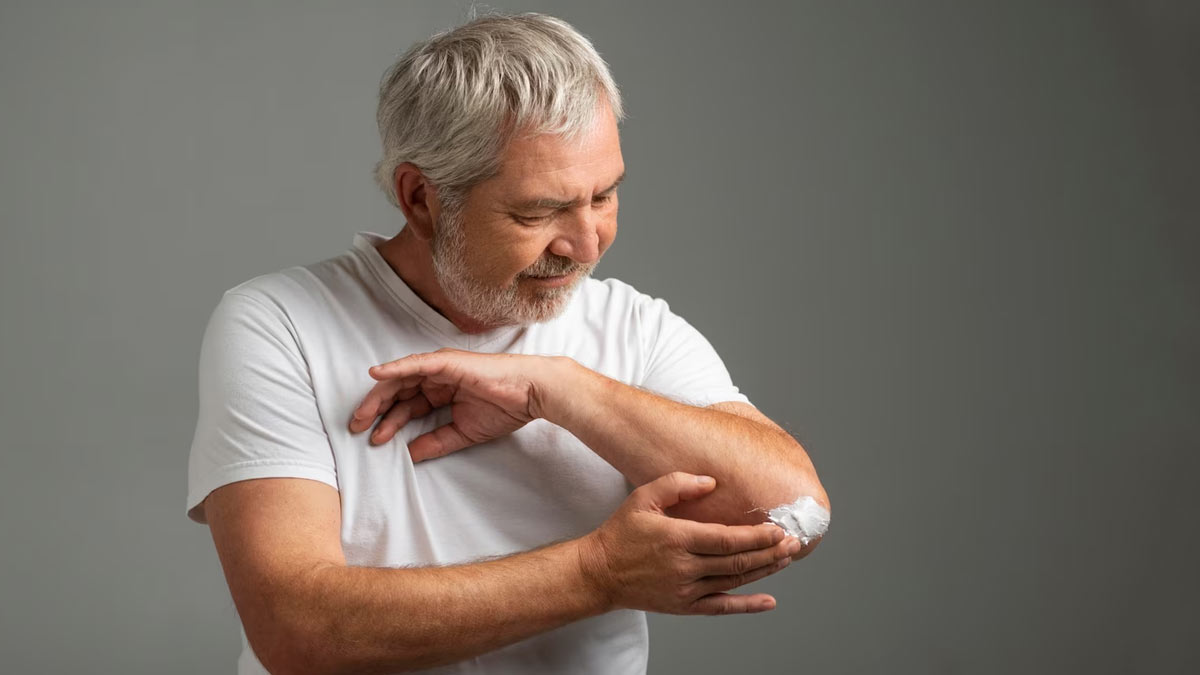
Shingles, also referred to as herpes zoster, is a painful skin rash triggered by the same virus as chickenpox, causing blistering and nerve pain. It's like a grown-up version of chickenpox that can really sting and can appear in different colours, including red, dark pink, dark brown, or purplish, depending on your skin tone.
Table of Content:-
In this article, we will learn all about this distressing illness, its symptoms and about people who are more prone to developing it than others. Moreover, Dr Hari Kishan, General Physician, MBBS, MD, MRCP, Kamineni Hospital, Hyderabad, will share some helpful tips to prevent the condition.
Common Risk Factors Of Shingles

A risk factor determines a person's likelihood of developing a particular disease. These factors can be genetic, environmental, lifestyle-related, or a combination of these, and they contribute to the overall assessment of an individual's health risk. As far as shingles is concerned, some of the common risk factors include:
Also Read: Shingles: Know Its Causes, Symptoms And Treatment
- Age
- Having a compromised immune system due to conditions like HIV/AIDS, cancer, or diabetes
- Taking specific medications like steroids or chemotherapy
- Exposure to high levels of stress
What Makes Older Adults More Susceptible

“The risk of developing shingles is closely tied to age, with a higher prevalence in individuals over 50,” says Dr Kishan, explaining, “With age, the immune system naturally declines, which makes people more susceptible to shingles. In addition, older people are more likely to have other health conditions that can weaken the immune system, such as cancer or diabetes.”
According to a study published in the Journal BMC Infectious Diseases, the lifetime prevalence of shingles among data collected from 2015 Health Survey for England was 11.5% - 12.6% among women, 10.3% among men. This was said to increase with age.
Symptoms To Watch Out For
The primary symptom of shingles is a painful rash that typically begins as a red, itchy patch of skin and progresses to small, fluid-filled blisters that eventually rupture and form crusts, lasting for approximately 2-4 weeks, according to Dr Kishan. Additional symptoms may include:
- Fever and chills
- Headache
- Fatigue
- Painful or tingling skin in the affected area, sometimes accompanied by numbness or weakness
According to the doctor, shingles can also lead to complications like postherpetic neuralgia (chronic pain), eye complications (pain, redness, swelling, and, rarely, blindness), and in exceptional cases, even stroke. The doctor advises to seek prompt medical attention if shingles is suspected, especially in older adults or individuals at higher risk.
Also Read: Scientists Find Chickenpox Virus Might Trigger Alzheimer’s
No Cure But Prevention Is Possible

Dr Kishan says, “There is no cure for shingles, but treatment options are available to alleviate symptoms and minimise complications.”
Typically, shingles treatment involves antiviral medications to shorten the rash's duration and lower complication risks, pain management with over-the-counter pain relievers, anti-itch creams, and cool compresses to soothe the affected skin and reduce pain.
However, prevention is key, which is possible through vaccination, primarily with the Shingrix vaccine, recommended for adults aged 50 and older, said to reduce the risk of shingles and complications like postherpetic neuralgia (PHN).
In a study published in the New England Journal Of Medicine, herpes zoster vaccine reduced the burden of illness due to herpes zoster by 61.1%, lowered the incidence of postherpetic neuralgia by 66.5%, and reduced the incidence of herpes zoster by 51.3%.
Additionally, the study highlighted that “the reactions at the injection site were more frequent among vaccine recipients but were generally mild.”
Besides vaccination, maintaining a healthy lifestyle by managing stress, getting adequate sleep, following a balanced diet, engaging in regular exercise, and taking overall good care of your health can also contribute to lowering the risk of shingles and supporting overall well-being, Dr Kishan concludes.
Also watch this video
How we keep this article up to date:
We work with experts and keep a close eye on the latest in health and wellness. Whenever there is a new research or helpful information, we update our articles with accurate and useful advice.
Current Version
